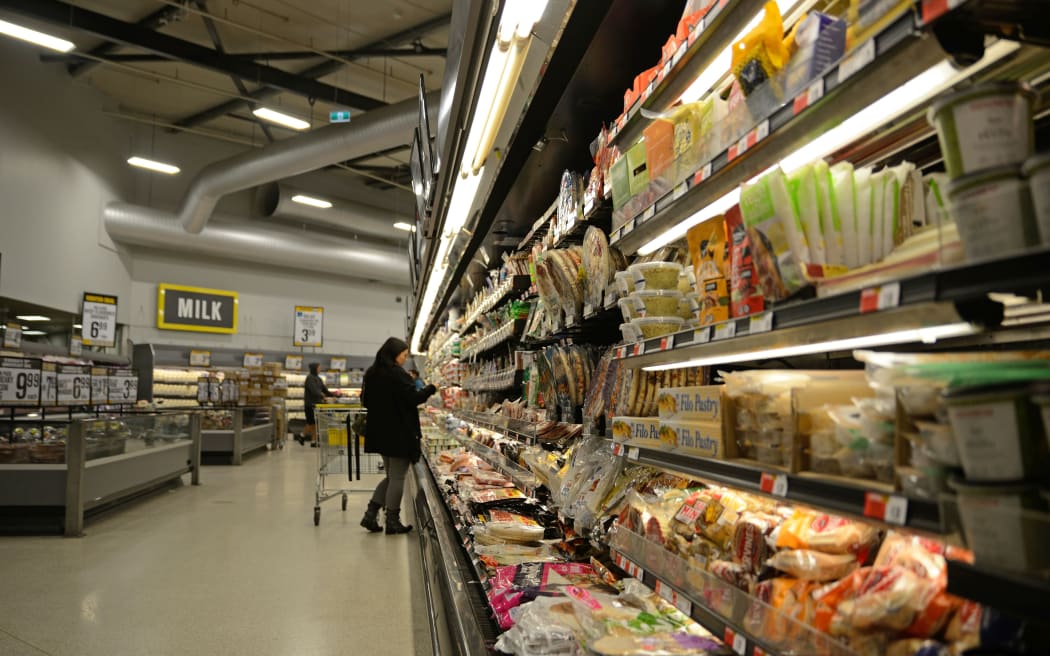Business
Grocery Prices Drop Slightly, But Cabbage Costs Skyrocket

Supermarket shoppers in New Zealand are experiencing a small reprieve in food prices, according to the latest data from Stats NZ. The overall food price index fell by 0.4 percent in September 2023 compared to August. This decline comes as a welcome change after a series of price increases, with vegetables and chocolate showing the most significant monthly reductions.
Boxed chocolates saw a steep price drop of 16.2 percent, while cucumbers decreased by 34 percent during the same period. Despite this monthly decrease, food prices rose by 4.1 percent year-on-year, marking the smallest annual increase since April 2023.
Cabbage Prices Reach New Heights
Among the various food items, cabbage has emerged as a standout, with prices soaring by 97 percent compared to the previous year. This increase represents the highest price for cabbage in nearly three years, prompting some concern among consumers. In contrast, other staples have also seen significant increases over the past year, with milk prices up 15 percent, cheese by 31.4 percent, and beef mince rising 17.7 percent.
Nicola Growden, a spokesperson for prices and deflators at Stats NZ, noted, “All five food groups continue to grow annually, but the rate of increase for overall food prices has slowed this month.” She also highlighted that the price of white bread has increased by 69 cents per loaf since December 2024.
Shoppers Seeking Affordable Options
Chris Quin, managing director of Foodstuffs, expressed relief at the easing of food price inflation after months of relentless increases. However, he cautioned that underlying cost pressures remain. “While global costs have started to moderate in some areas, what our co-ops pay for the grocery items New Zealand produces and exports remains elevated—especially in dairy and red meat,” Quin explained.
He pointed out that butter prices are still up 27 percent year-on-year. To address affordability, Foodstuffs has been selling Pams butter at a loss in an effort to keep prices accessible for shoppers. Quin noted that many customers are opting for home brand products to save money, with sales of Pams products increasing 4.7 percent over the last two years.
With spring now underway, Quin mentioned that prices for seasonal products are beginning to ease. He remarked, “We’ve had a bit of a cold snap which has slowed growth in things like asparagus and berries, but other produce has come back strongly.” As the season progresses, prices for tomatoes and lettuce are expected to decline, while avocados are currently a good value, aligning with local preferences as summer approaches.
Quin also indicated that reductions in global olive oil prices are beginning to reflect in retail. “It can take three months or more for changes in commodity prices for products like olive oil to be seen in what shoppers experience here,” he said. The outlook for spring appears promising, with no major weather events recently impacting crops.
As the next six weeks unfold, Quin emphasized the importance of this period for tree crops such as apricots and cherries, which will help determine the summer season’s overall outlook. He concluded that the local and global economic challenges of the past five years have shifted customer behavior, with New Zealanders increasingly shopping around for better deals. “Our co-ops are competing hard to offer the best deals by buying smart and seasonally,” Quin stated.
As shoppers navigate these fluctuating prices, the combination of small price drops and significant increases, particularly in certain vegetables, paints a complex picture for the grocery market in New Zealand.
-

 World7 days ago
World7 days agoPrivate Funeral Held for Dean Field and His Three Children
-

 Top Stories1 week ago
Top Stories1 week agoFuneral Planned for Field Siblings After Tragic House Fire
-

 Sports3 months ago
Sports3 months agoNetball New Zealand Stands Down Dame Noeline Taurua for Series
-

 Entertainment3 months ago
Entertainment3 months agoTributes Pour In for Lachlan Rofe, Reality Star, Dead at 47
-

 Entertainment2 months ago
Entertainment2 months agoNew ‘Maverick’ Chaser Joins Beat the Chasers Season Finale
-

 Sports3 months ago
Sports3 months agoSilver Ferns Legend Laura Langman Criticizes Team’s Attitude
-

 Sports4 weeks ago
Sports4 weeks agoEli Katoa Rushed to Hospital After Sideline Incident During Match
-

 Politics2 months ago
Politics2 months agoNetball NZ Calls for Respect Amid Dame Taurua’s Standoff
-

 World2 weeks ago
World2 weeks agoInvestigation Underway in Tragic Sanson House Fire Involving Family
-

 Entertainment3 months ago
Entertainment3 months agoKhloe Kardashian Embraces Innovative Stem Cell Therapy in Mexico
-

 Sports4 weeks ago
Sports4 weeks agoJamie Melham Triumphs Over Husband Ben in Melbourne Cup Victory
-

 Top Stories1 week ago
Top Stories1 week agoShock and Grief Follow Tragic Family Deaths in New Zealand



















